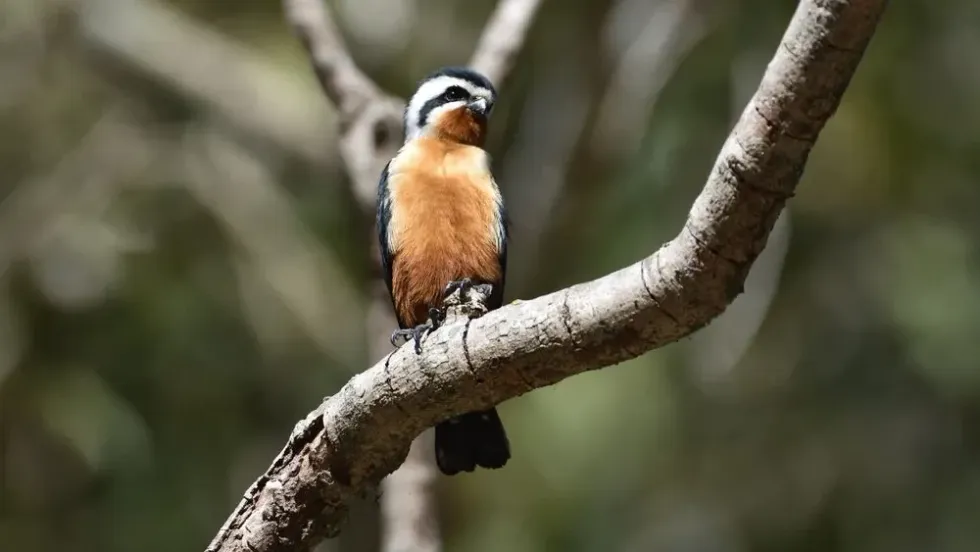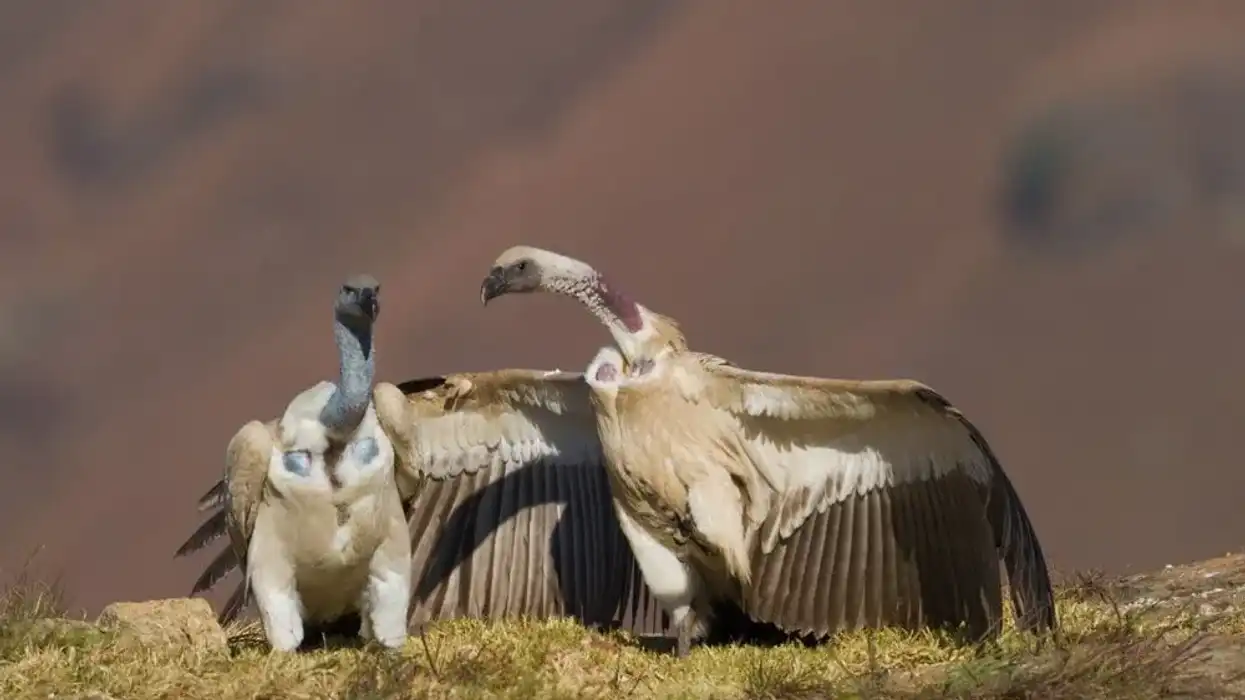The collared falconet (Microhierax caerulescens) species is among the smallest species of birds belonging to the falcon family. They are widely found in various parts of the world such as Nepal, northern India, Bangladesh, southern China, and Bhutan.
They are so small that some people consider them to be pocket-sized falconets. Although most birds of prey are quite aggressive, these birds are quite the opposite. They are adorable.
Their body color, panda-like eyes, and sweet sounds just to their cuteness! These birds also do not possess any harm to human beings. The felling of trees and habitat degradation is causing a major threat to this species' population.
They are quite social and are often spotted in groups where they are seen grooming themselves. This social nature is also reflected when young falconets are born. Along with the breeding pair, three other adults take up the responsibility to feed the newborns too, how sweet!
To learn more about this interesting species of bird, keep reading. Are you interested in learning about more animals living around the world? Then don't forget to read about the Peregrine falcon and Saker falcon too!
Collared Falconet Interesting Facts
What type of animal is a collared falconet?
The collared falconet (Microhierax caerulescens) is one of the smallest species of falcon birds in the world. Also known as birds of prey, these birds belong to the Falconidae family.
What class of animal does a collared falconet belong to?
This bird belongs to the Aves class of animals.
How many collared falconets are there in the world?
The exact number of collared falconet (Microhierax caerulescens) birds across the world is not known. However, an abundance of these birds is observed in India, Vietnam, Laos, Thailand, Bhutan, Myanmar, Cambodia, Nepal, and Bangladesh.
Where does a collared falconet live?
This pocket-sized species of falcons can be found in abundance in Nepal, northern India, Bangladesh, southern China, Bhutan, Myanmar, southern Vietnam, Thailand, Laos, and Cambodia.
What is a collared falconet's habitat?
Among the most preferred habitat of these birds are deciduous forests, evergreen forests, and open woodland habitats. They can also be found in clearings in forests and forest edges.
Who do collared falconets live with?
This bird species lives in groups with other individuals and they are often found grooming each other.
How long does collared falconet live?
The average lifespan of these birds is not known.
How do they reproduce?
The breeding season of the collared falconet (Microhierax caerulescens) starts in February and continues until May.
Instead of building their nests from scratch, this bird species builds their nests in old woodpeckers or barbet nests lined with dry leaves, usually 19.7-39.4 ft (6-12 m) above ground. The female lays between four and five white eggs and these small collared falconet eggs have reddish spots.
The female takes up the responsibility of incubation, while both birds in the breeding pair, along with three other adults, take up the responsibility of feeding the young birds after the eggs hatch.
What is their conservation status?
According to the International Union for Conservation of Nature (IUCN) Red List, the conservation status of the collared falconet (Microhierax caerulescens) is listed as Least Concern. These birds can be abundantly found in their natural habitat in India, Thailand, Bhutan, Myanmar, Nepal, and other countries.
Collared Falconet Fun Facts
What do collared falconets look like?
Collared falconets are among the smallest species of falcon birds in the world. An adult male has a black head and a white forehead that stretches over the eye and forms a large white collar on the neck. A black streak runs through each eye.
Their eyes are pretty unique, and give them a panda-like appearance. The rest of the upper body is glossy black, although the tail quills have a hint of white. The deep chestnut throat is separated by a white band from the black mustache below.
The covered backs and the breast are predominantly white. The sides of the body are black too.
The tail is mostly black and white with four white bars. Females look very similar to the males. counterparts.

* Please note that this is an image of a black-thighed falconet, not a collared falconet. If you have an image of a collared falconet please let us know at hello@kidadl.com.
How cute are they?
These small falcon birds look cute. Their eyes give them a panda-like look and from their size to their body color, everything adds to their cuteness!
How do they communicate?
This species of falconet uses its voice to communicate. These birds make a rhythmic 'kli-kli-kli' sound, the pitch and volume of which rise and fall, making it melodious even to those who are unable to understand it.
How big is the collared falconet?
Belonging to the Falconidae family, this species can grow up to 6-7 in (15-18 cm). On average they are about 2 in (5 cm) longer than a chestnut sparrow.
How fast can collared falconet fly?
Although the exact flying speed of the bird is not known, it can be said that they fly at a moderate speed.
How much does a collared falconet weigh?
The average weight of birds of this species falls somewhere around 1.2-1.8 oz (34-51 g).
What are the male and female names of the species?
A male collared falconet is called a 'cock', whereas a female is called a 'hen'.
What would you call a baby Collared falconet?
A baby Collared falconet is known as a 'chick'.
What do they eat?
These birds mostly prey upon insects such as butterflies, lanternflies, dragonflies, grasshoppers, lizards, cicadas, and beetles. They even prey upon small forest birds.
Are they dangerous?
Belonging to the Microhierax genus, this species of bird do not pose any danger to human beings.
Would they make a good pet?
This is a wild bird that should be left in the natural habitat of the species. Therefore, no matter how adorable they look, this bird would not make a good pet.
Did you know...
This species of bird does not migrate. They spend their entire lives in one place.
They can prey upon birds larger than themselves!
The collared falconet's eggs
During the breeding season, females lay four or five eggs. Their eggs are mostly white, look a little dirty, and have red spots on them.
Naming the collared falconet
The name of the bird, more precisely the name of the bird's genus, comes from a Greek word, meaning 'tiny hawk'. Ornithologist Richard Bowdler coined the term. These birds are also described as birds of prey.
Here at Kidadl, we have carefully created lots of interesting family-friendly animal facts for everyone to discover! Learn more about some other birds from our Sea Eagle Facts and Shikra Facts pages.
You can even occupy yourself at home by coloring in one of our free printable collared falconet coloring pages.









